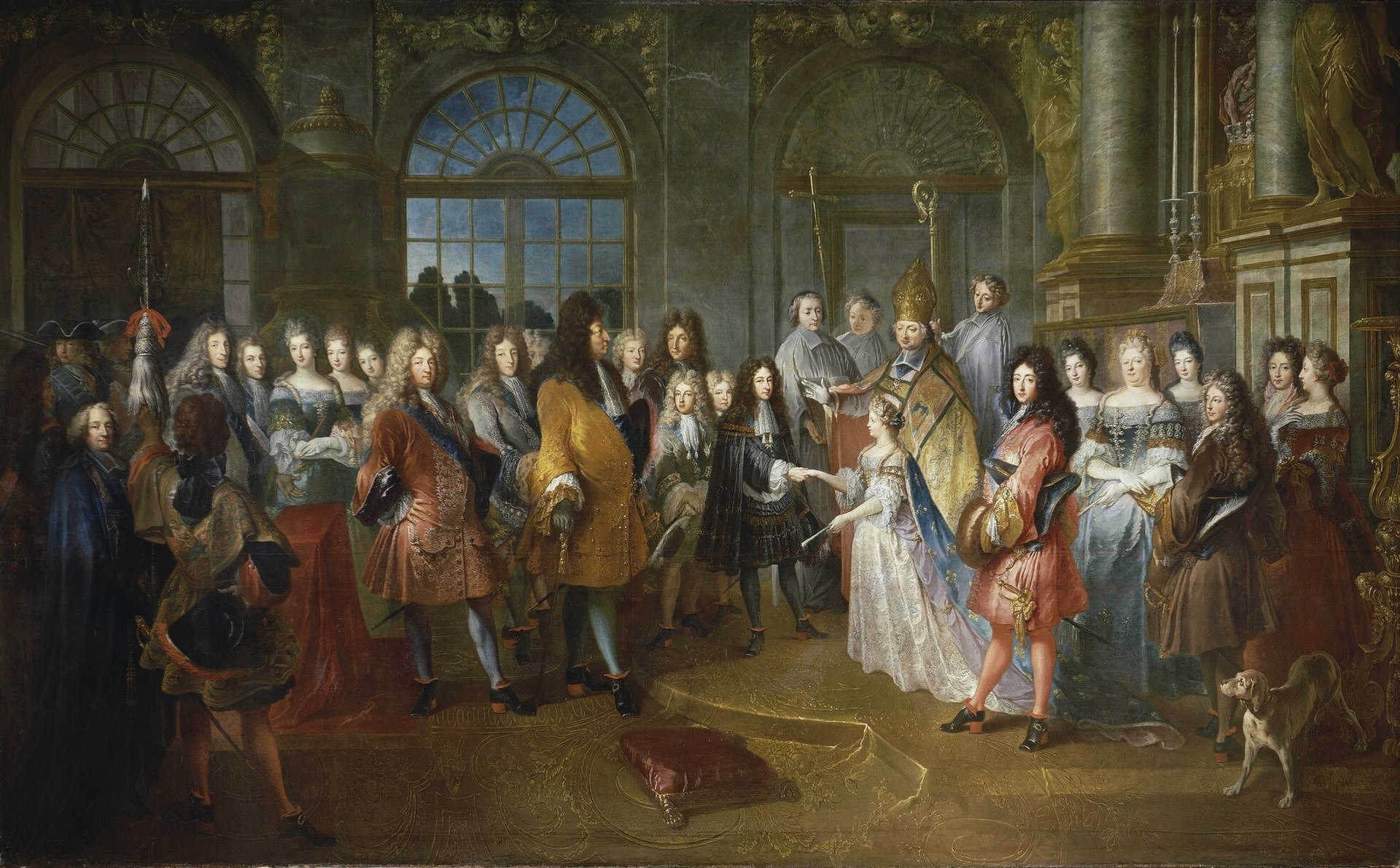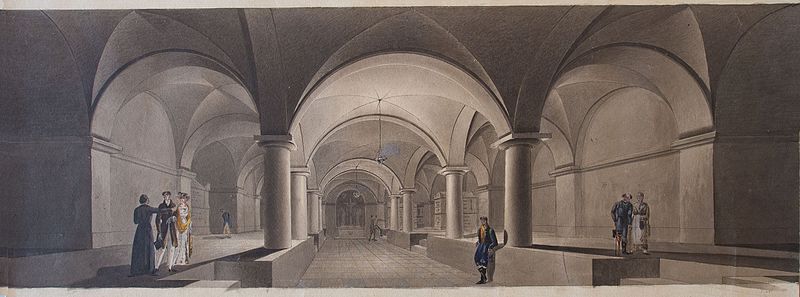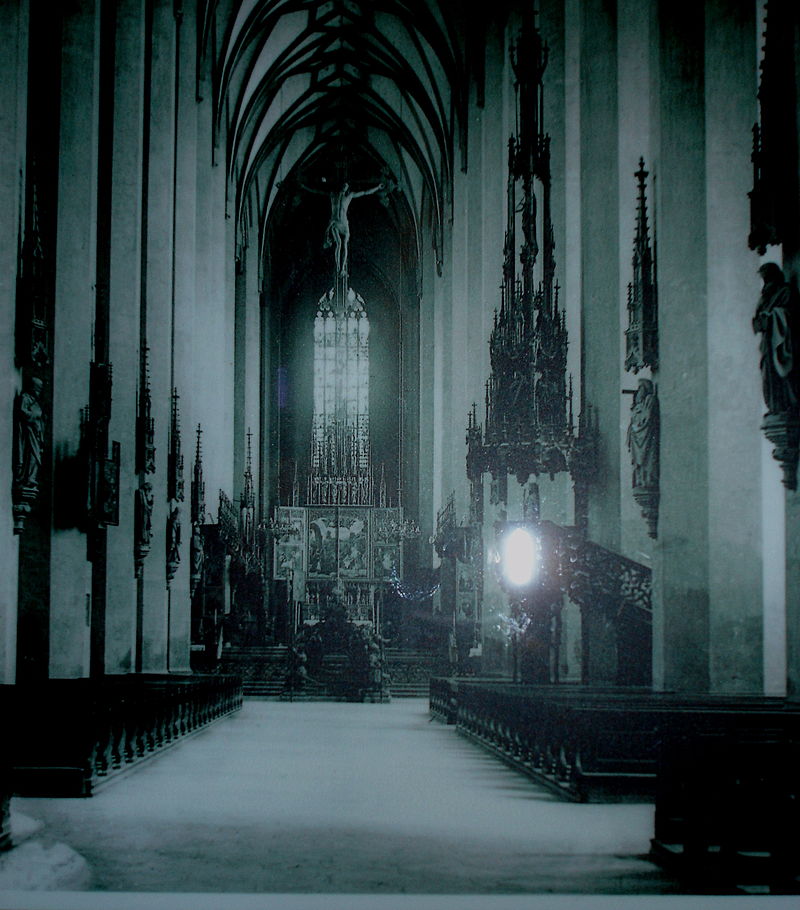by Susan Flantzer
© Unofficial Royalty 2022
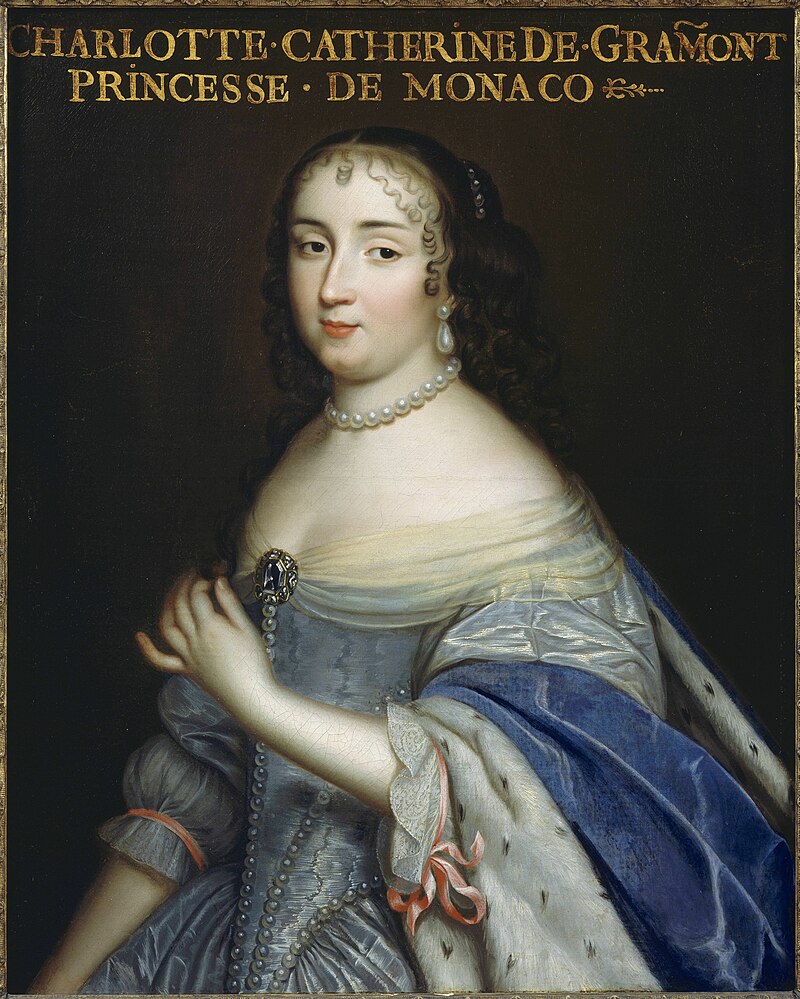
Catherine-Charlotte de Gramont, Princess of Monaco; Credit – Wikipedia
Catherine-Charlotte de Gramont was the wife of Louis I, Prince of Monaco, and had many affairs at the French court including one with King Louis XIV. In 1641, during the reign of Louis’ grandfather Honoré II, Monaco became a French protectorate, and the Princes of Monaco became vassals of the Kings of France while remaining sovereign princes. Many successive Princes of Monaco and their families spent most of their lives in France and intermarried with French and Italian noble families, and Louis I, Prince of Monaco was no exception.
Born in 1639, Catherine-Charlotte de Gramont, Princess of Monaco was the second of the four children and the elder of the two daughters of Antoine de Gramont, Duke of Gramont, a French military commander, diplomat, and a Marshal of France (1604 – 1678), and Françoise Marguerite du Plessis (1608 – 1689), a niece of the powerful late Cardinal Richelieu (Armand Jean du Plessis, Duke of Richelieu), who served as the First Minister of State to King Louis XIII of France from 1624 until his death in 1642. Both Catherine-Charlotte’s parents came from French noble families.
Catherine-Charlotte had three siblings:
- Armand de Gramont, Count of Guiche (1637 – 1673), known as Armand, married Marguerite-Louise-Suzanne de Béthune
- Antoine Charles de Gramont, Duke of Gramont (1641 – 1720), married (1) Marie-Charlotte de Castelnau, had two children (2) Anne Baillet de la Cour
- Henriette-Catherine de Gramont, married Alexandre de Canonville, Marquis of Raffetot
Like many other aristocratic girls, Catherine-Charlotte was educated at the Convent of the Visitation of Faubourg-Saint Jacques in Paris. When Catherine-Charlotte and her cousin Antonin Nompar de Caumont, Marquis de Puyguilhem, later Duke of Lauzun, fell in love and her father refused his permission for them to marry, they became lovers.
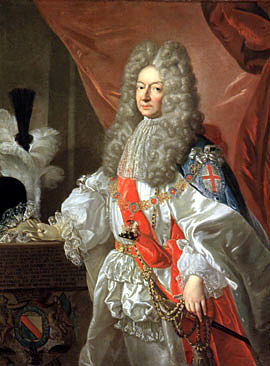
Catherine-Charlotte’s cousin and lover, Antonin Nompar de Caumont, Marquis de Puyguilhem; Credit – Wikipedia
In 1651, when Hercule Grimaldi, Marquis of Baux, the only child and heir of Honoré II, Prince of Monaco, was killed in a firearms accident, Hercule’s only son, nine-year-old Louis, became the heir to his grandfather’s throne. Louis’ godparents were King Louis XIII of France, after whom he was named, and Louis XIII’s wife Anne of Austria. The current King of France, Louis XIV, was four years older than Louis and was his contemporary. When Louis reached a marriageable age, his grandfather Honoré II set out to find him a wife who was the daughter of a high noble at the French court.
Via a marriage to a member of the French nobility, Louis’ grandfather Honoré II, Prince of Monaco hoped to strengthen the alliance between Monaco and France against Spain and obtain valuable connections to the French court. However, such a marriage would also benefit the family of Louis’ bride. Seven foreign princes, of which the Prince of Monaco was one, were recognized by the French Crown to owe a special loyalty to France. Called ducs et pairs étrangers (foreign dukes and peers), they were given extra privileges and took precedence over the French nobility. These foreign princes walked behind the princes of the blood royal in processions. Their wives also had privileges such as sitting on tabourets (stools) in the presence of the Queen. By marrying Louis, a future Prince of Monaco, the daughter of a French noble would be assured of social, economic, and court preeminence.

Louis I, Prince of Monaco; Credit – Wikipedia
Honoré II and his advisers went through a list of French nobles with marriageable daughters, and Catherine-Charlotte was chosen. Catherine-Charlotte was twenty, three years older than her prospective groom, but it was understood that she was unmarried because her father had refused to allow her to marry her cousin. Honoré II was assured that the affair between the cousins was over and that Catherine-Charlotte’s father would agree to the marriage. Only one of those statements turned out to be true.

The Chateau de Pau where Catherine-Charlotte and Louis were married; Credit – Wikipedia
On March 30, 1660, 21-year-old Catherine-Charlotte married 18-year-old Louis at the Gramont family’s Chateau de Pau in the Pyrenees Mountains in Pau, France. The newlyweds spent the month of April at the Chateau de Pau. They then traveled to Paris where they lived on the second floor of the Gramonts’ magnificent townhouse on the Rue de l’Autriche and regularly attended the French court. Despite being married and Honoré II being assured the affair was over, Catherine-Charlotte continued her affair with her cousin Antoine Nompar de Caumont.

Antonio I, Prince of Monaco, Catherine-Charlotte and Louis’ eldest child and Louis’ successor; Credit – Wikipedia
Louis and Catherine-Charlotte had six children. In 1663, they founded a convent of the Order of the Visitation of the Holy Mary (also known as the Visitandines) in Monaco. Their twin daughters became nuns at the convent.
- Antonio I, Prince of Monaco (1661 – 1731), married Marie of Lorraine, had six daughters including his successor Louise Hippolyte, Princess of Monaco
- Maria Teresa Carlotta Grimaldi (1662 – 1738), twin of Jeanne Maria, a Visitandine nun in Monaco, later Abbess of the Visitandine convent in Monaco
- Jeanne Maria Grimaldi (1662 – 1741) twin of Maria Teresa, a Visitandine nun in Monaco, later Abbess of the Abbey of Royallieu near Compiègne, France
- Teresa Maria Aurelia Grimaldi (1663 – 1675), died in childhood
- Anna Hippolyte Grimaldi (1664 – 1700), married Jacques de Crussol, Duc d’Uzès, no children
- François Honoré Grimaldi, Archbishop of Besançon (1669 – 1748 – link in French)
After a reign of fifty-eight years, Honoré II, Prince of Monaco, Louis’ grandfather, died in 1662, and 20-year-old Louis became Prince of Monaco. Louis needed to return to Monaco and Catherine-Charlotte was forced to accompany him against her will. In 1665, Catherine-Charlotte left her husband and children in Monaco and returned to the French court because she found life at the Monaco court boring. Upon returning to the French court, Catherine-Charlotte was appointed a lady-in-waiting to Henrietta of England, Duchess of Orléans, the first wife of Philippe I, Duke of Orléans, the only sibling of King Louis XIV. Catherine-Charlotte resumed her affair with her cousin Antonin Nompar de Caumont, Marquis de Puyguilhem.

King Louis XIV of France; Credit – Wikipedia
King Louis XIV, who was beginning to lose interest in his mistress Louise de la Vallière, began a relationship with Catherine-Charlotte in 1665. This was actually a plot by Henrietta, Duchess of Orléans to distract the king from Louise in the hopes that he would return her. King Louis XIV ordered Catherine-Charlotte’s cousin and lover, the Marquis de Puyguilhem, to leave Paris. When Puyguilhem refused to obey, he was sent to the Bastille for six months. When Puyguilhem was released from the Bastille, Catherine-Charlotte’s affair with King Louis XIV was already over. One night Louis XIV did not find the key to Catherine-Charlotte’s room in its usual place because it had been taken by another. Louis XIV did not return to Henrietta but began his long-time affair with Françoise-Athénaïs de Rochechouart de Mortemart, also known as Madame de Montespan.
Because of all the rumors swirling around his wife regarding her affairs, Louis I, Prince of Monaco decided to join his brother-in-law Armand de Gramont, Count of Guiche in the Anglo-Dutch Wars fighting for the Dutch. While Louis was at war, Catherine-Charlotte remained at court and her affairs were scandalous. Among her affairs was one with Philippe, Chevalier de Lorraine, the lover of King Louis XIV’s brother, and Henrietta’s husband, Philippe I, Duke of Orléans.
In 1672, Louis and Catherine-Charlotte separated. Catherine-Charlotte obtained a position as a lady-in-waiting to Louis XIV’s mistress Françoise-Athénaïs de Rochechouart de Mortemart, but the position lasted only one year. In the following years, she became seriously ill, probably with cancer. Catherine-Charlotte died at the Palais Royal in Paris, France on June 4, 1678, at the age of 39. She was buried at the now-destroyed Convent of the Capuchins in Paris, France. Catherine-Charlotte had not seen her husband Louis I, Prince of Monaco during the last six years of her life, and Louis showed no grief over her death. Louis survived Catherine-Charlotte by twenty-three years, dying from a stroke on January 3, 1701, aged 58, in Rome, then part of the Papal States, where he was serving as King Louis XIV’s ambassador to the Holy See in Rome.
This article is the intellectual property of Unofficial Royalty and is NOT TO BE COPIED, EDITED, OR POSTED IN ANY FORM ON ANOTHER WEBSITE under any circumstances. It is permissible to use a link that directs to Unofficial Royalty.
Works Cited
- Edwards, Anne, 2017. The Grimaldis of Monaco. Blue Ridge Summit: Lyons Press.
- En.wikipedia.org. 2022. Antoine III de Gramont – Wikipedia. [online] Available at: <https://en.wikipedia.org/wiki/Antoine_III_de_Gramont> [Accessed 25 January 2022].
- En.wikipedia.org. 2022. Catherine Charlotte de Gramont – Wikipedia. [online] Available at: <https://en.wikipedia.org/wiki/Catherine_Charlotte_de_Gramont> [Accessed 25 January 2022].
- Flantzer, S., 2022. Louis I, Prince of Monaco. [online] Unofficial Royalty. Available at: <https://www.unofficialroyalty.com/louis-i-prince-of-monaco/> [Accessed 25 January 2022].
- Fr.wikipedia.org. 2022. Catherine Charlotte de Gramont — Wikipédia. [online] Available at: <https://fr.wikipedia.org/wiki/Catherine_Charlotte_de_Gramont> [Accessed 25 January 2022].
- Historyandwomen.com. 2011. Catherine Charlotte de Gramont. [online] Available at: <https://www.historyandwomen.com/2011/11/catherine-charlotte-de-gramont.html> [Accessed 15 January 2022].












